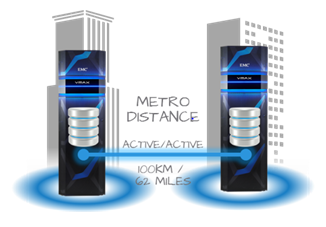 As a new parent, I have gained a new respect for the efforts that my parents went through to be present, nay active, in many of the extra-curriculars of my youth. Whether it was coaching a team or helping with science fair projects using a 4-inch thick Encyclopedia to get started, they were active and involved. To them, this meant the balance of work and family in a time when cellphones were literally a brick in a bag, the Internet was being conceptualized, and video phones were fiction presented in the movie Back to the Future. Now, I am almost able to be in two places at one time. I use video chat so that I can see my six month old sit up for the first time or take his future first steps. And I do it with a device that allows me to access information at my fingertips, helps me manage my life, and is literally smaller than my wallet (and could even replace it). The pace of change and the ability of technology to dissolve distance is truly astounding.
As a new parent, I have gained a new respect for the efforts that my parents went through to be present, nay active, in many of the extra-curriculars of my youth. Whether it was coaching a team or helping with science fair projects using a 4-inch thick Encyclopedia to get started, they were active and involved. To them, this meant the balance of work and family in a time when cellphones were literally a brick in a bag, the Internet was being conceptualized, and video phones were fiction presented in the movie Back to the Future. Now, I am almost able to be in two places at one time. I use video chat so that I can see my six month old sit up for the first time or take his future first steps. And I do it with a device that allows me to access information at my fingertips, helps me manage my life, and is literally smaller than my wallet (and could even replace it). The pace of change and the ability of technology to dissolve distance is truly astounding.
EMC is also dissolving distance for your data between datacenters with the introduction of SRDF/Metro on VMAX3. SRDF/Metro leverages and extends standard SRDF/S (synchronous) functionality to provide concurrent access from a host or clustered hosts to a virtual LUN or storage group that physically exists on both arrays of the SRDF/Metro pair. Put simply you can have your data be active, in and between two places, at the same time. This new functionality enables higher availability for applications and stretch clusters at metro distances, think New York to New Jersey. We see more and more enterprises expressing a need to simplify the deployment for this type active-active site design. They are looking to deliver better server utilization for VMware or Microsoft stretch clusters, or for data to remain online during maintenance windows, or even still to deliver high availability with instant recovery protecting against site failures.  SRDF/Metro in VMAX3 delivers active-active high availability for non-stop data access and resource balancing within and across data centers at metro distance. By delivering this functionality natively in VMAX3, our customers can further reduce the infrastructure costs needed to deploy modern data services. (Check out this IDC Infobrief: Validating Hyperconsolidation Savings with VMAX3 to see details on the infrastructure savings that can be achieved with VMAX3.)
SRDF/Metro in VMAX3 delivers active-active high availability for non-stop data access and resource balancing within and across data centers at metro distance. By delivering this functionality natively in VMAX3, our customers can further reduce the infrastructure costs needed to deploy modern data services. (Check out this IDC Infobrief: Validating Hyperconsolidation Savings with VMAX3 to see details on the infrastructure savings that can be achieved with VMAX3.)
Our enterprise customers demand to do more with less, and VMAX3 allows them to do this with SRDF/Metro and the full complement of additional enterprise data services. The speed and agility in which we are delivering new data services like ProtectPoint, embedded NAS, FAST.X and the many more to come is made possible by the revolutionary architecture of VMAX3 and the hypervisor built into HYPERMAX OS. If you haven’t seen it yet, this short video will help you better understand how we are able to bring to market features like SRDF/Metro and other embedded services like ViPR inside.
https://youtu.be/RTkTYa4n8AY?list=PL1F6F23C54113557F
Next time I talk to my parents I am going to thank them for being active and available in my youth. As for our customers’ data, VMAX3 is ready with SRDF/Metro when they are set to deploy active-active data centers with data availability in two locations at the same time.